Average sizes and life expectancy for this breed:
The Turkish Van is lovingly nicknamed the "swimming cat" for their love of water. It is not uncommon to find them splashing in pools, ponds, bathtubs, or any other source of water they can find. This highly intelligent, active, affectionate cat is easy to train, and for sure, you’ll have hours of playtime with this cat breed.
Because Turkish Vans do not reach their full maturity until around three to five years old, this kitten's coat will fill in as they grow. Their semi-long, luxurious coat, comparable to the feel of cashmere, needs minimal grooming.
Turkish Vans are large, highly spirited cats that demonstrate their athletic ability both on land and in the water. While most cats run when they see water, this cat breed is a strong and skilled swimmer. This is one characteristic that made the Turkish Van’s personality so unique. It's their soft, water-resistant coat; specifically, that lets the cat enjoy water sports.
Turkish Vans have distinctive markings. It is called a "Van pattern," consisting of an almost all-white body colouring on its face and tail. Common colours also include red and brown. This one-of-a-kind pattern occurs because of the presence of what is called the "piebald" gene, resulting in large unpigmented areas of the body. Their bushy, squirrel-like tail complements their distinct physical appearance.
In addition to their unique coat markings, Turkish Vans may sport eyes of different colours. They may have two amber eyes, two blue eyes, or one of each, a characteristic not unusual with this cat breed.
See available kittens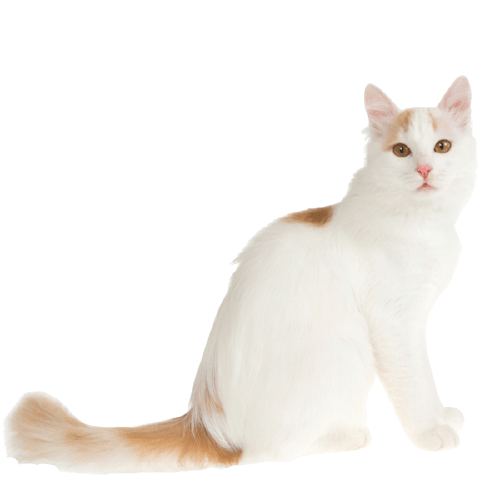

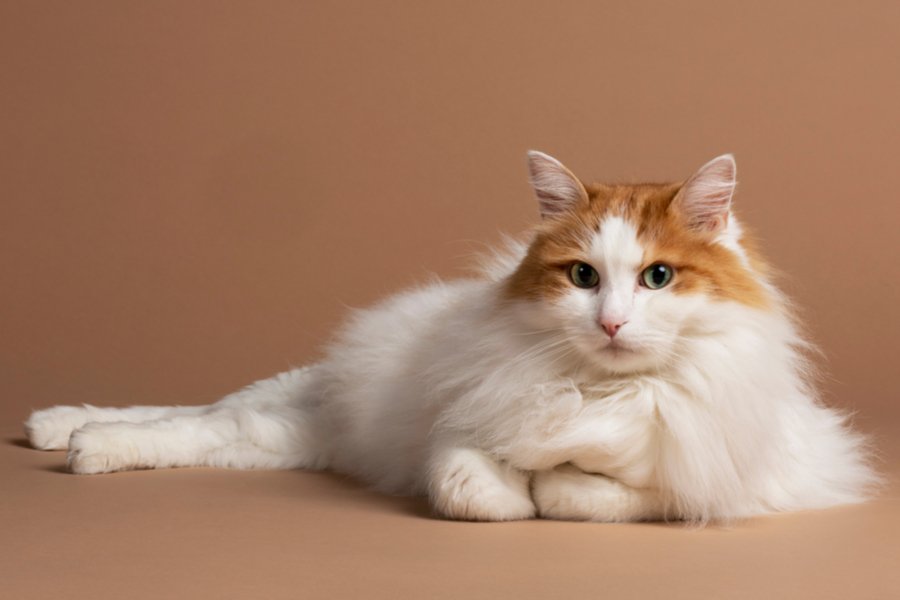


Turkish Vans get their name from Lake Van, a mountainous area in Turkey’s eastern Anatolian region. They possibly existed there for many centuries, protected by their isolation and remoteness from the rest of the world.
In the mid-1950s, western photographers Sonia Halliday and Laura Lushington first discovered the Turkish Vans. They were provided with a pair of kittens during their trip in the area and were astounded to see the breed go to ponds or streams for a swim any time they like.
When these photographers took these cats back to England with them, there was an immediate interest in the cat breed. However, these cats were rare even in the country of their origin. Fortunately, cat breeders have taken care to preserve this breed. In Turkey, Turkish Vans are considered national treasures.
Turkish Vans were not taken to the United States until the year 1982. But in 1979, The International Cat Association already recognized them as a breed. Also, they are recognized by the Cat Fanciers Association and other international cat registries.
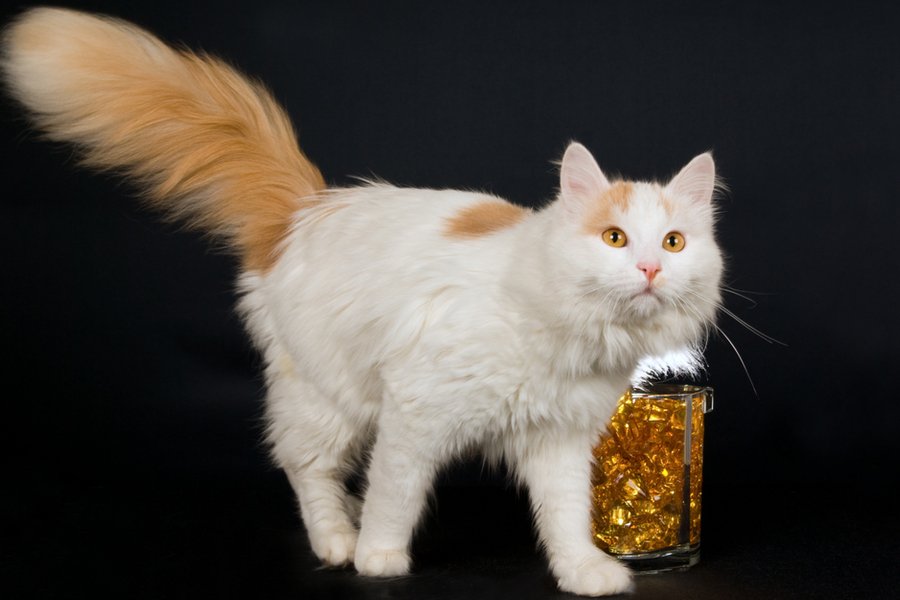
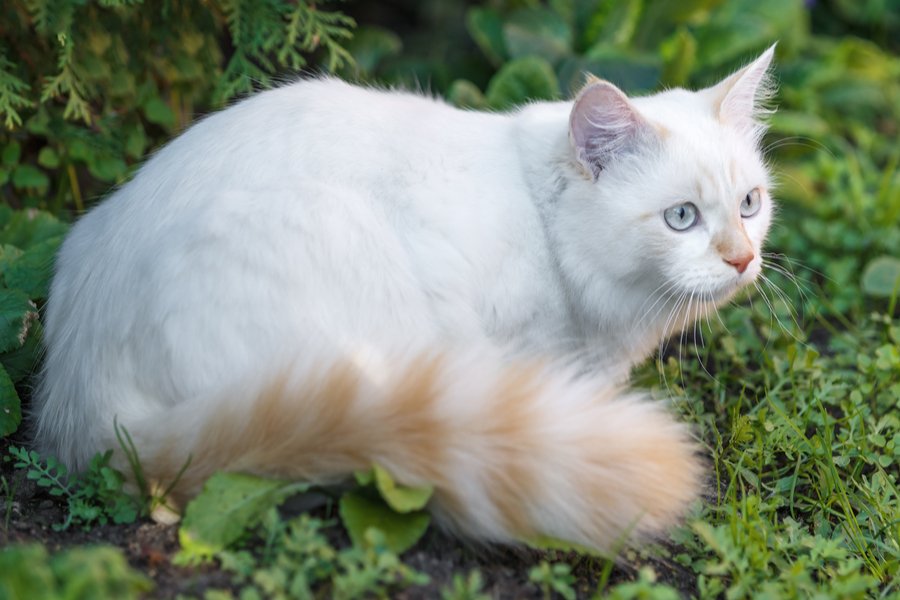
Turkish Vans are a large, muscular yet graceful cat breed with a white body and unique coloured head and tail. These cats are well-balanced and solid in their appearance. Their large ears are set high on their head, and their large eyes are oval and expressive.
The Turkish Van’s coat is long, soft and smooth with no woolly undercoat. Their paws are tufted, and their tail has a full brush. The Turkish Vans’ body is mainly chalk white with coloured markings on top of their head. The colouring on their head is parted by a vertical white blaze. Periodically, small thumbprints of colour appear on their body. Their eyes may be blue or amber or one of each.
Turkish Vans come in several colours from the traditional white with auburn to the recent and still pretty rare varieties, black, tortoiseshell, white with cream, blue, blue tortie, blue-tabby, brown tabby, tortie tabby or blue tortie tabby.
Preferably, their body should be chalk-white with no trace of yellow. Turkish Vans should have coloured markings on their head, but not underneath eyeliner level or beyond the base of the back of their ears, with the colour on the head separated by a vertical white blaze. Their tail should also be coloured and is described as a full brush.
Their fur should be long, soft, and silky to the roots. Their coat is shorter in the summer and much denser in the winter. Their neck and chest ruff become even more distinct with maturity. Notably, Turkish Vans take three to five years to reach full maturity.
The Turkish Vans’ personality is best described as playful, energetic, and fun-loving. They require a lot of love and attention from their human companions. That is why they are a perfect match for those who have ample time to share with their feline friend.
Turkish Vans are also jumpers. They have powerful hind legs so expect to find them on top of furniture or on some other high place where they can perch and observe.
Turkish Vans are not much of a lap cat. But they will be happy to cuddle next to their human companion and sleep in their bed. They will also give you direction as to how to pet them properly.
Energetic and social, Turkish Vans are highly intelligent and need regular exercise and playtime to blossom. Because of their bright minds, sometimes this cat breed can also get itself into mischief. An example of this is their particular fondness of knocking items off shelves and tables. They are not known for being floor cats because they prefer to be on top of everything, watching their surroundings below.
Because of their high energy and love for high places, Turkish Vans are a little inconsiderate to the ornaments or items in the house you find valuable. To prevent this, it's best to keep valuables away in cupboards and invest in plenty of toys to take their attention away from your things.
Watch out for their love of water as this can lead them into trouble, too. Check and put down your toilet seats and don’t leave the bathtub full. You may also find your faucets dripping as these smart cats can quickly learn how to turn them on. It’s not uncommon for a Turkish Van to simply enjoy lying in the water, particularly on a hot sunny day.
Turkish Vans dislike being held or restrained. If you are not sure about how a Turkish Van is feeling, check their nose as they tend to turn red when the cat is upset. If their nose starts to change from pink to crimson, notice this sign and leave them alone.
They are very social and affectionate cats that get deeply devoted to members of their family. However, they may select one or two as their favourites. They are active and athletic and remain playful into their senior years.
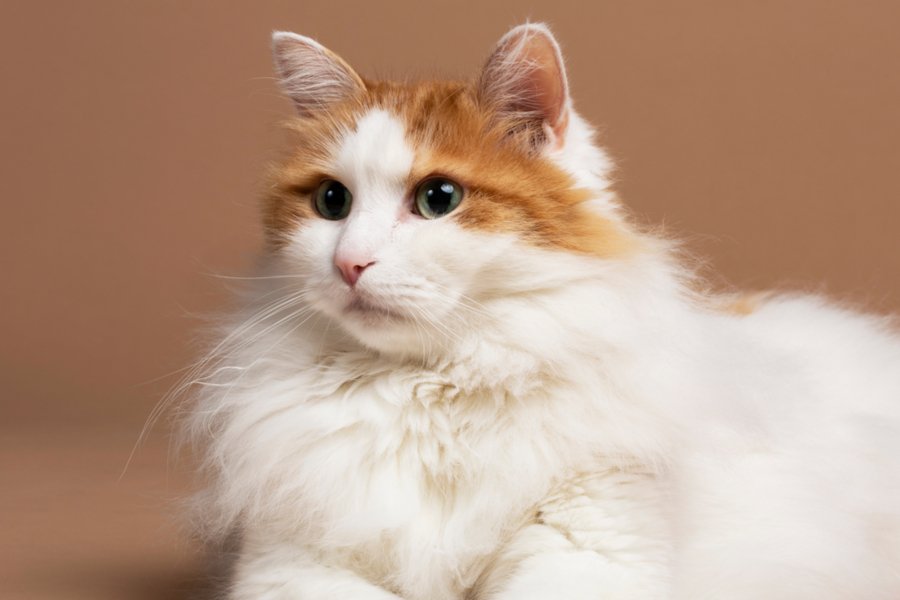
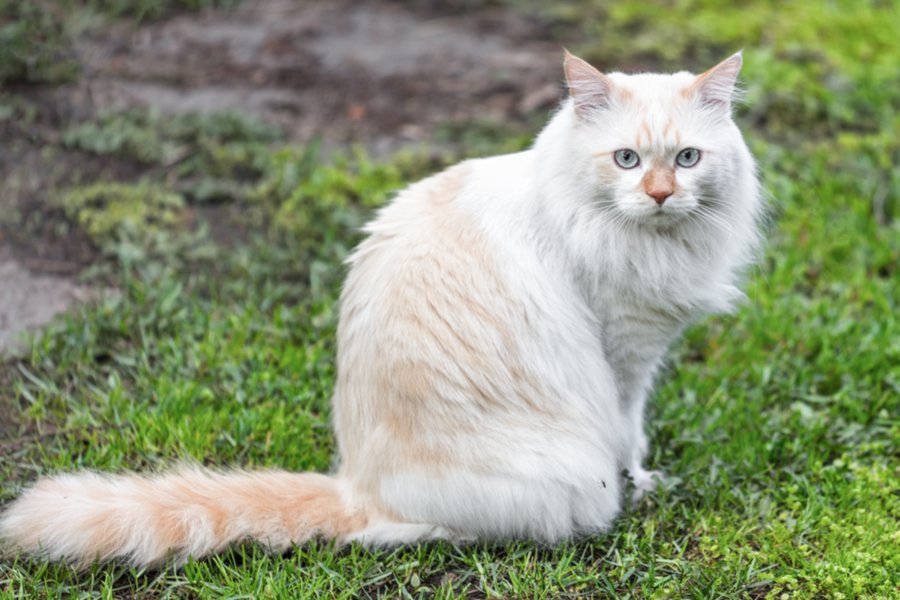
Turkish Vans are highly intelligent and can quickly learn games and tricks, including playing fetch. Challenge their brain by teaching them tricks and providing puzzle toys that reward them with treats. These cats can also be successfully clicker trained.
Other favourite toys are big peacock feathers, furlike toys on a string, and small balls that they can chase and fetch. They particularly enjoy teaser toys that allow them to mimic tackling prey. The Van is tough on toys though, so be prepared to replace them regularly.
When a Turkish Van cat is adequately socialised and trained during kittenhood, they will grow up to be a well-mannered and well-rounded cat.
Turkish Vans have a single coat with a smooth texture. They do not have an undercoat so they do not get tangled or matted. This makes them easy to groom with weekly combing or brushing using a slicker brush.
Their coat sheds very little except during spring and fall when their old hair is falling out and new coat is coming in. Senior cats may have trouble grooming themselves thoroughly during this time. So, they may need your assistance to keep their coat healthy and tangle-free. That’s why it is a good idea to brush or comb them regularly.
It is very important to know which brush or comb works best for your Turkish Van. Start training them at a young age using a very soft brush, so it doesn’t pull or hurt their fine kitten fur and their skin. As you establish your grooming routine, give your Turkish Van a reward after every session. This way, they know that good behaviour leads to a small treat. As they mature, you can switch to a more appropriate brush or comb for their needs and age.
Check their ears weekly for dirt, debris or wax. You can wipe them out using a cotton ball or soft damp cloth moistened with a vet-approved ear cleaner. If you notice a foul odour coming from their ears, contact your vet for treatment.
Weekly tooth brushing is recommended to prevent any gum and tooth diseases or decay. Keep their nails clean and neat by trimming them twice a month or when needed. Wipe any eye discharge you notice with a clean, soft, damp cloth.
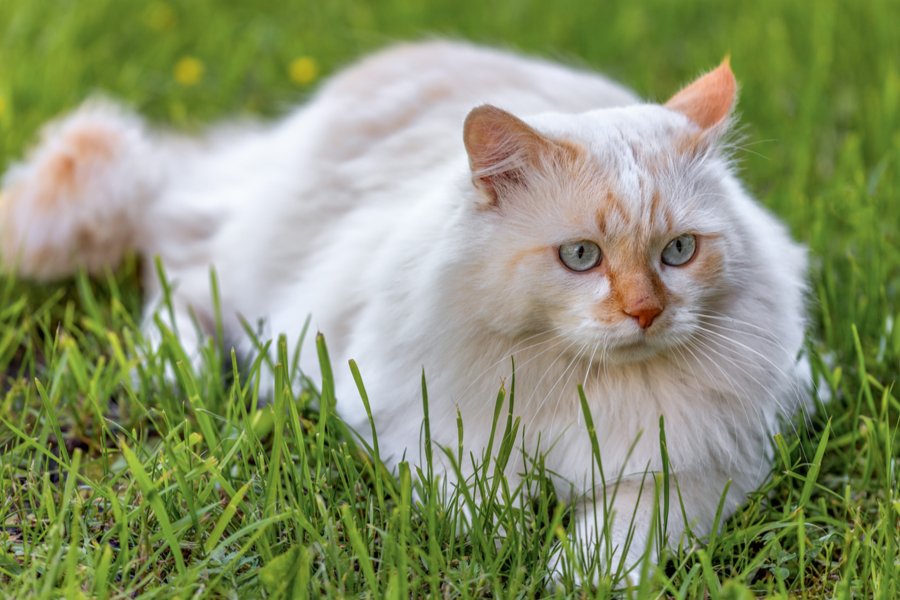
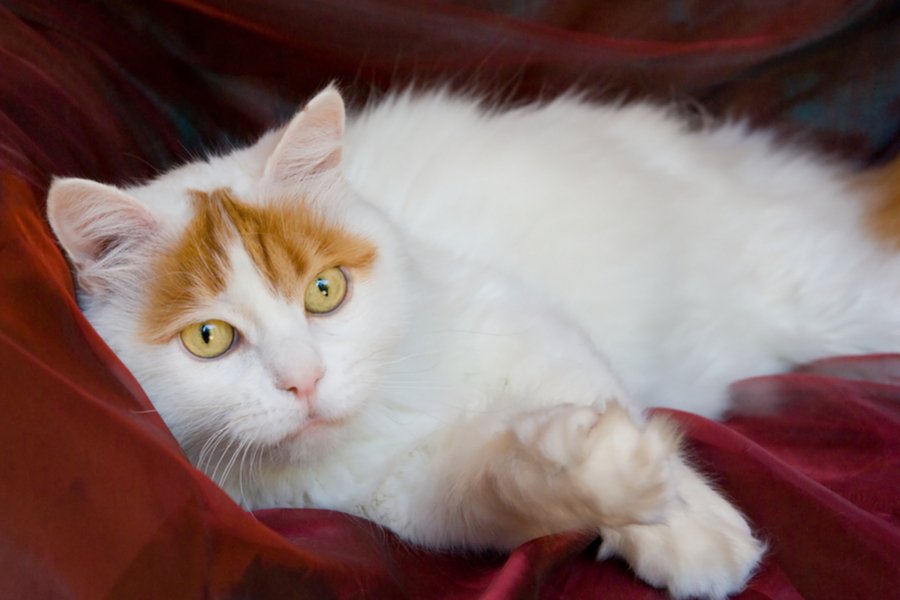
Turkish Vans are generally a healthy cat breed. Their life expectancy is between thirteen to seventeen years with proper care, exercise and a high-quality diet. Even so, it's still important to ensure your breeder runs a DNA health check on your Turkish Van kitten and its parents. These tests check for genetic diseases and give you peace of mind that you are bringing home a fully healthy kitten.
Turkish Vans who have been adequately socialised are relaxed with children, making them a perfect choice for families with active kids who enjoy throwing a ball for the cat to fetch, running around with a teaser toy, or teaching tricks. It is still best to supervise young children to make sure they pet the Turkish Van nicely and do not pull their fur or tail.
Turkish Vans are happy to live and play with cat-friendly dogs as long as these dogs recognize that they are in charge. When it comes to other cats, they prefer the company of their own kind. Don’t worry; they will still accept other cats as long as they are brought up together from kittenhood. In other cases, familiarise pets gradually and in a controlled environment to ensure that they learn to get along well together.
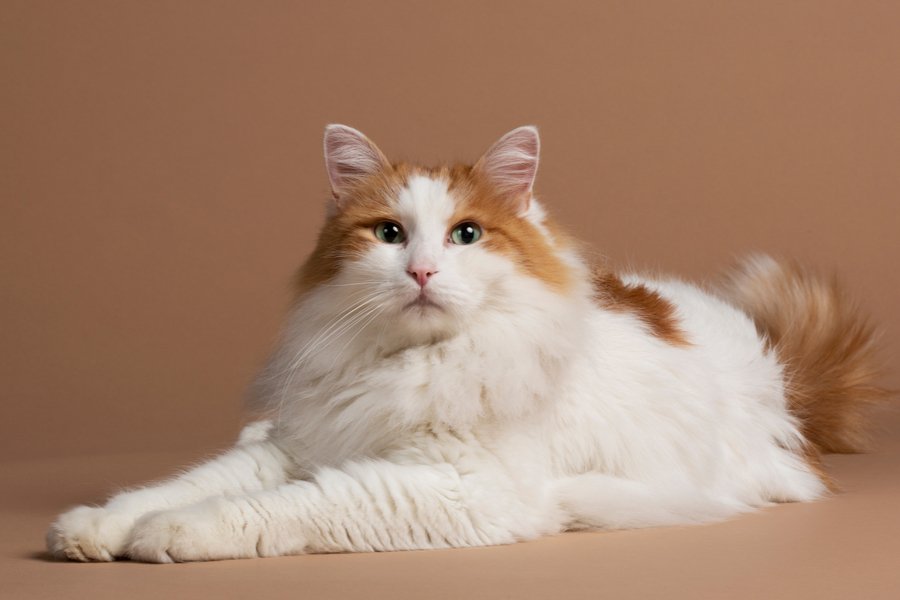
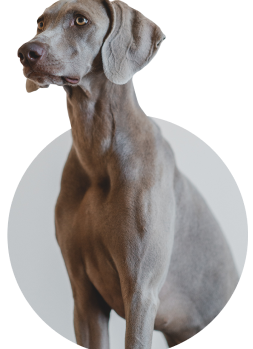
We can connect you with Breeders that are specialized in this particular breed.
See available kittens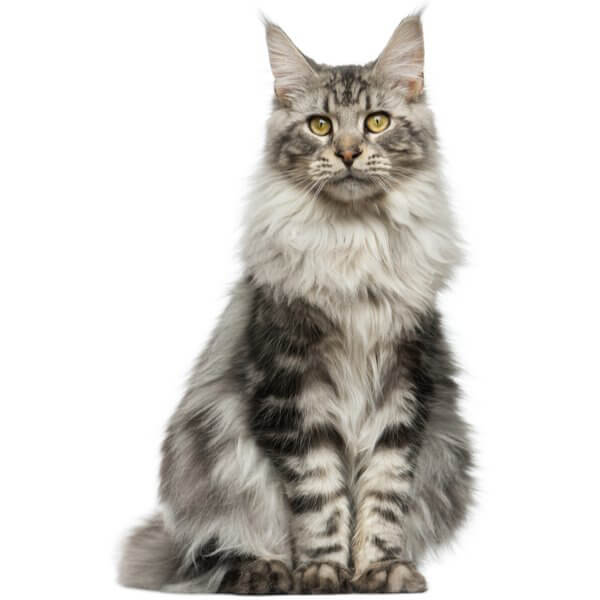
United States of America
Size : Large
Coat : Long
Registration : GCCF, TICA, CFA, FIFe
Vocality : Low
Hypoallergenic : No
Grooming : Twice a Week
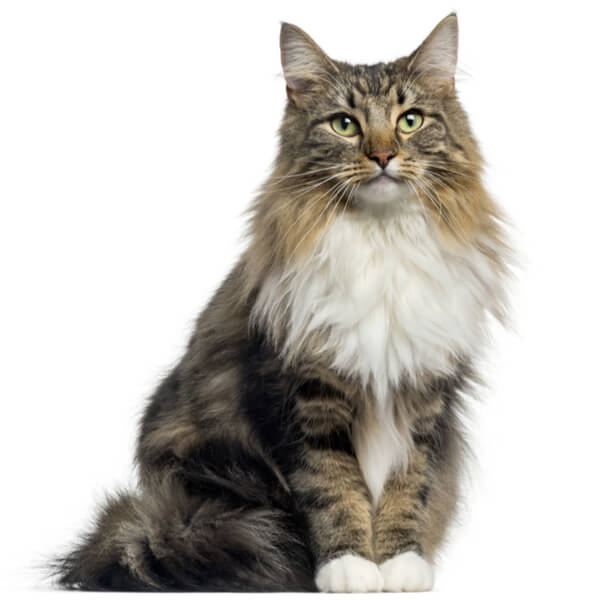
Norway
Size : Large
Coat : Long
Registration : GCCF, TICA, CFA, FIFe
Vocality : Low
Hypoallergenic : No
Grooming : Twice a Week
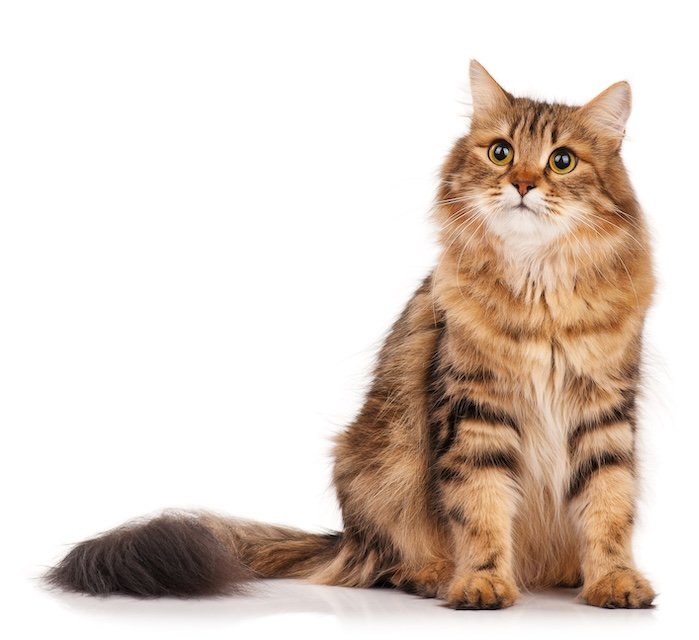
Russia
Size : Medium
Coat : Long
Registration : GCCF, TICA, CFA, FIFe
Vocality : Medium
Hypoallergenic : Yes
Grooming : Twice a Week
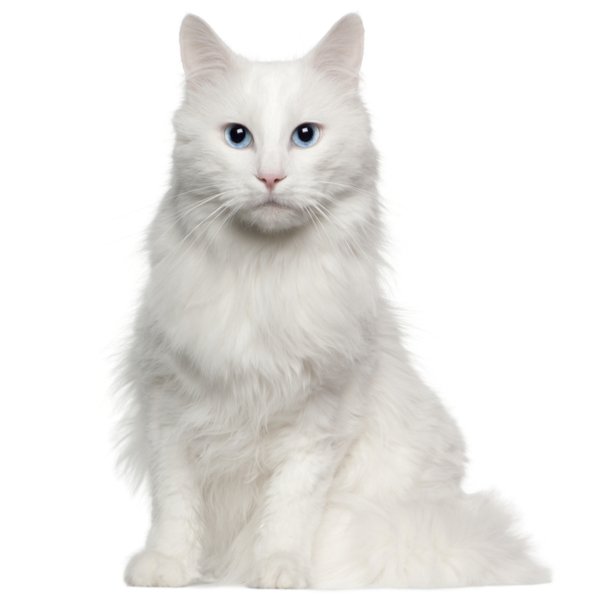
Turkey
Size : Medium
Coat : Long
Registration : GCCF, TICA, CFA, FIFe
Vocality : Low
Hypoallergenic : No
Grooming : Twice a Week


Need some advice?
Whether you're a first time pet owner, an experienced pet owner, a new or long-time breeder, or just curious about pets, we've got you covered!
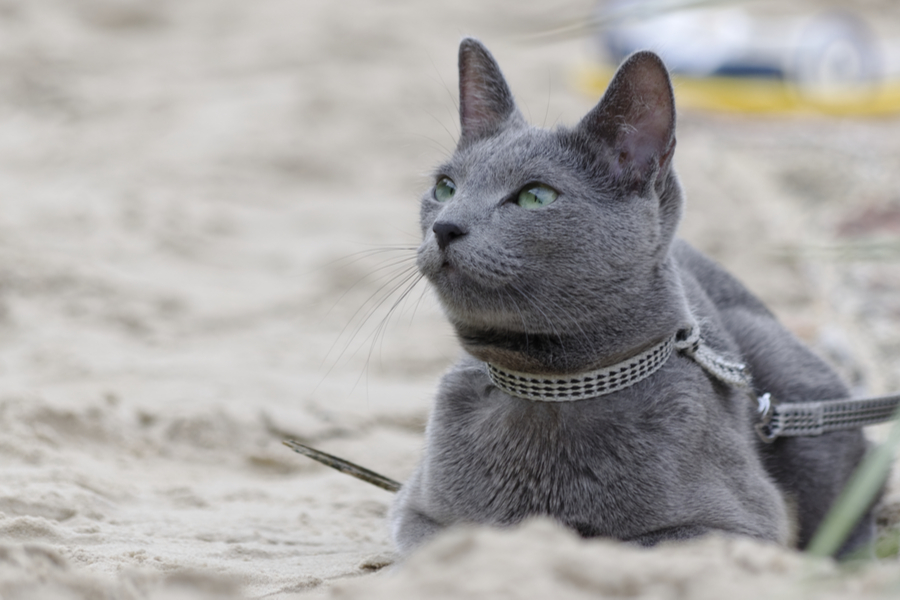
January 17, 2024
What Is The Personality Of Russian Blue Cats?
Russian Blue cats are most known for their distinctive shimmery blue-silver coat and piercing green eyes. However, this breed’s calm and gentle temperament is what makes them shine the most in the feline world.
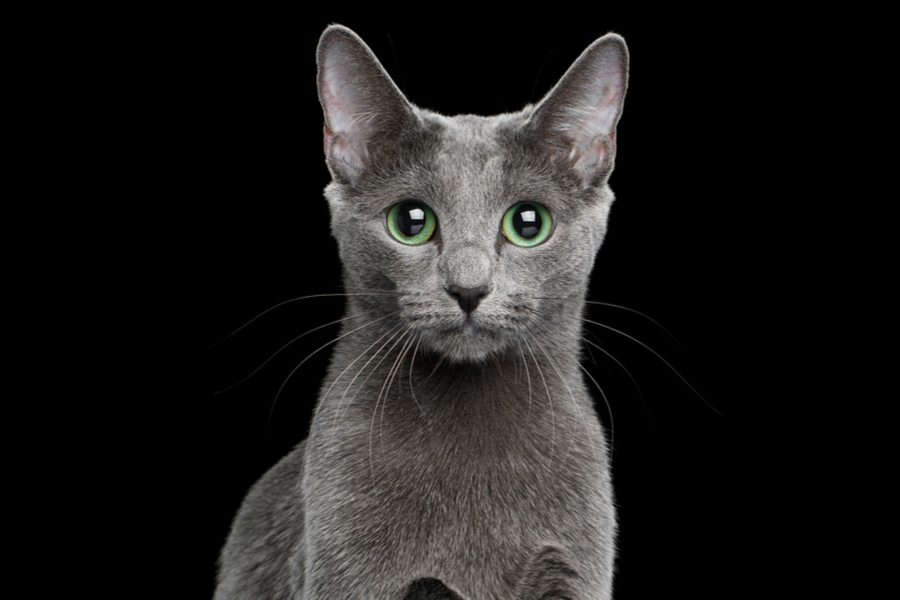
January 17, 2024
10 Facts About Russian Blue Cat Breed
Russian Blues are one of the most aesthetically stunning cat breeds, with a gorgeous plush silvery coat and vibrant green eyes. However, it’s not only their appearance that is beautiful; their nature is too.
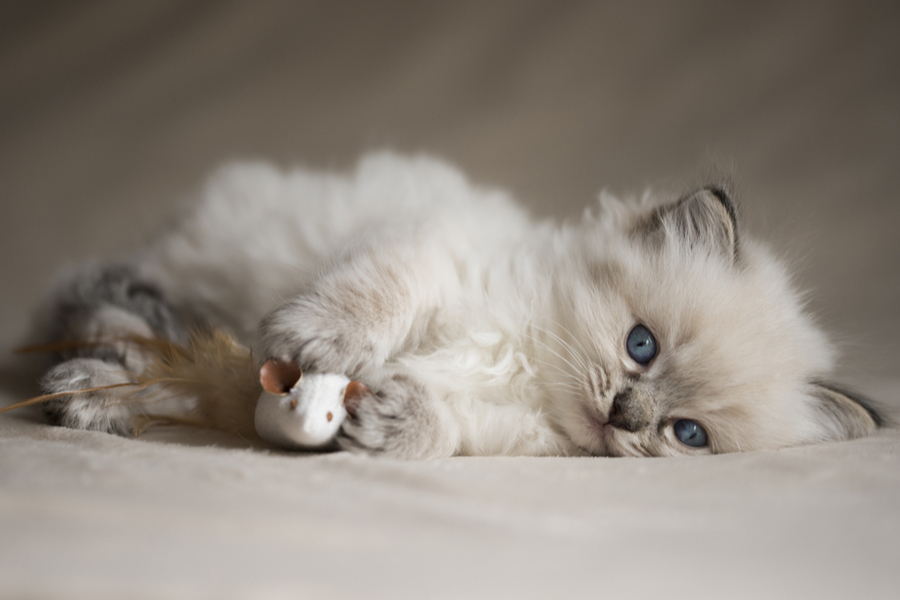
January 17, 2024
How To Choose The Right Cat Breed for You
Cats can make the most fantastic animal companions; they are adorable, friendly, and loving. However, not all felines are created equal. There are many different breeds, of which each has its unique personality traits.
Need some help?
Contact us to speak to our friendly advisor, who will gladly help you find your dream pet!



We are registered in England and Wales under registration number 12568840,
and our registered office is at 58-60 Kensington Church Street, W8 4DB London, England.
© 2023 The Pedigree Paws